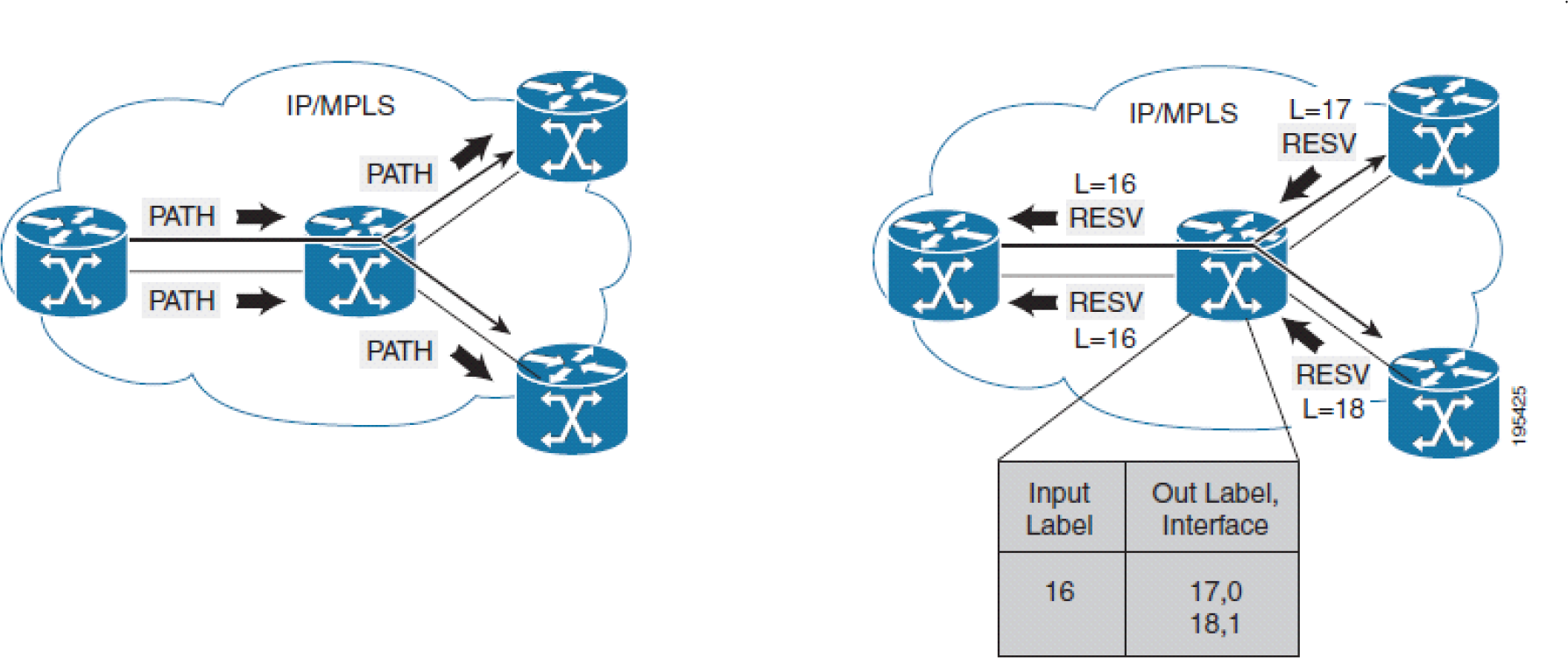In P2MP LSP, the P2MP LSP is composed of two complete LSPs. Each LSP is known as a subLSP, or more formally, a source-to-leaf (S2L) sub-LSP.

In the example in P2MP LSP, the PE on the left sends two path messages, one for each PE on the right. The ingress PE sends the same RSVP session ID to both egress PEs. The P device (branch point) allocates the same label (16, in this example), to bind to all labels that are returned by downstream devices for the same RSVP session ID. The downstream egress PEs return an allocated label for the path message.
Eventually, a P2MP LSP will form, which is a “tree-like” path in terms of real traffic flow. In the example in P2MP LSP, a multicast from left to right will be pushed with label 16 from the ingress PE and forwarded to the P device. When the P device receives the incoming traffic with label 16, it forwards the traffic in two directions: swaps 16 with 17 to interface 0, and swaps 16 with 18 to interface 1. Both egress PEs receive exactly the same data from the P device with the expected label.